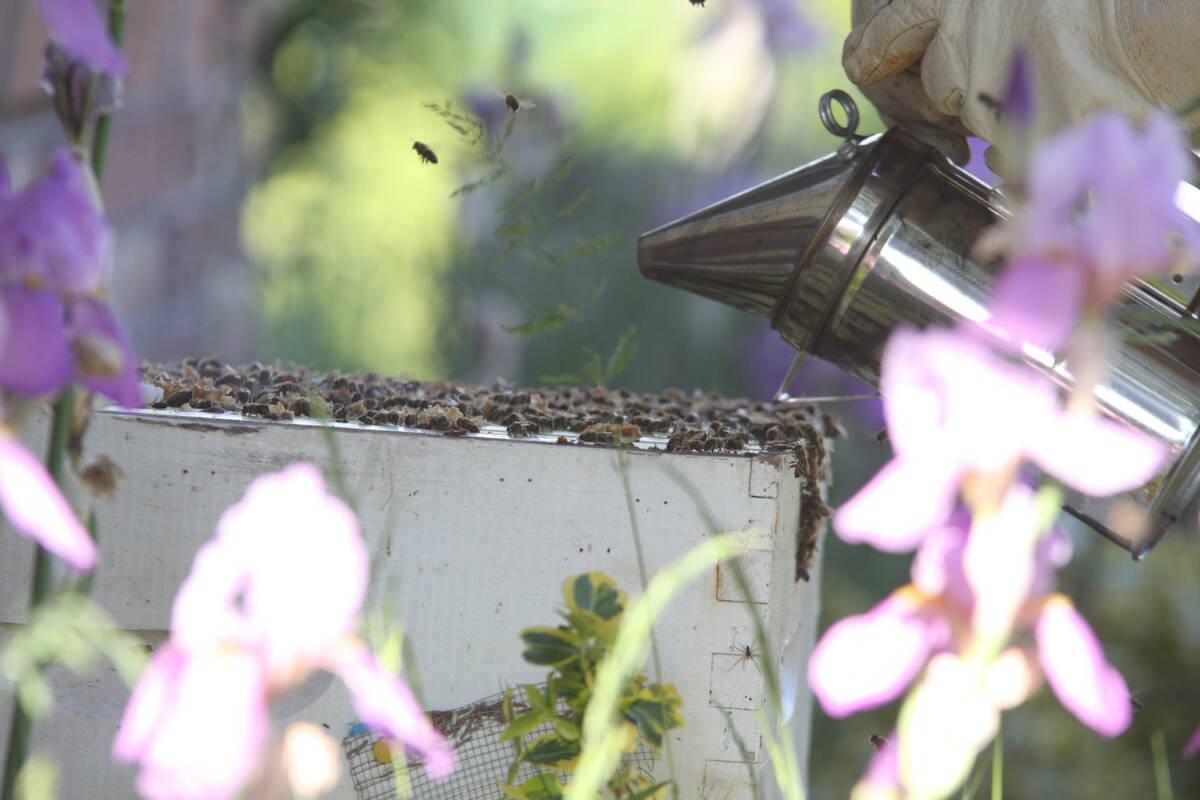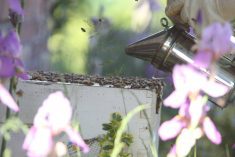Called fibresheds, these value chain networks can comprise farmers, dye producers, woolen mills, artisans, designers and retailers
GUELPH, Ont. — Fibresheds are beginning to catch on.
“This is like where the organic food industry was 15 or 20 years ago,” said Jennifer Osborn of the Upper Canada Fiber Shed, who talked about the phenomena at the Guelph Organic Conference Jan. 30.
“With this model, you can have a lot of impact, producing food and fibre, creating jobs and utilizing land that may not be much good for anything else.”
Fibresheds, an extension of the local food movement, are basically local textile value chain networks.
Read Also

Manitoba beekeepers battle for survival
Honeybee colony losses have hit 43 per cent, making 2025 the latest in a string of poor bee survival years for Manitoba’s honey producers
“We’ve defined our fibershed in Ontario as being within 250 miles (400 kilometres) of Toronto, more or less,” Osborn said.
“It captures a very large area where there are processors, fibre producers and a big population.”
Osborn and Becky Porlier launched the Upper Canada Fiber Shed in 2013 after looking at the original Fibershed, a group founded by Rebecca Burgess, who wrote a book about natural dyes called Harvest Colour.
Fibershed now has more than 100 members, says its website. Members include Californian farmers, dye producers, woolen mills and artisans involved in the production, design and retail of natural fibres, especially wool.
There are also 28 affiliated fibresheds: 20 in the United States and another eight outside the country, including the Upper Canada Fiber Shed in Ontario and Vancouver Fibershed Community, Sunshine Coast Fibershed, Saltspring Island Fibershed and Vancouver Island Fibershed in British Columbia.
The Upper Canada Fiber Shed is less formalized than the California group. Its website lists 16 farmers who keep everything from Shetland sheep to goats, alpacas and rabbits.
There are eight processors in Ontario, five of which are listed on the fibreshed’s website.
Fibre processing is a challenging business because operations tend to open and close, but Osborn is optimistic.
The local animal-based fibre sector has made gains in Ontario, but there’s little in the way of plant fibre production.
Osborn said the province used to be home to significant flax and hemp fibre industries. Barriers to reinvestment in the area include establishing a value chain, finding affordable, small-scale production equipment and competing with overseas production.
Osborn said fibresheds that use renewable materials make sense from an ecological perspective. They replace the artificial dyes and petrochemicals commonly used by large garment manufacturers, which can have negative environmental and health impacts.
Positive attributes are also attached to wool.
Osborne said wool garments are breathable, dry quickly and are resistant to mildew and rot although they do biodegrade slowly. Wool is also resistant to static and dust mites and is durable. Wool carpets that are properly cared for can last for generations.
Lower grades of wool are now being used for insulation in homes, and woolen mats are being produced to deal with oil spills.
Osborn has a background in art, design and animal husbandry. Her interest in wool felting and the fibreshed concept began when she was given two Shetland sheep.














